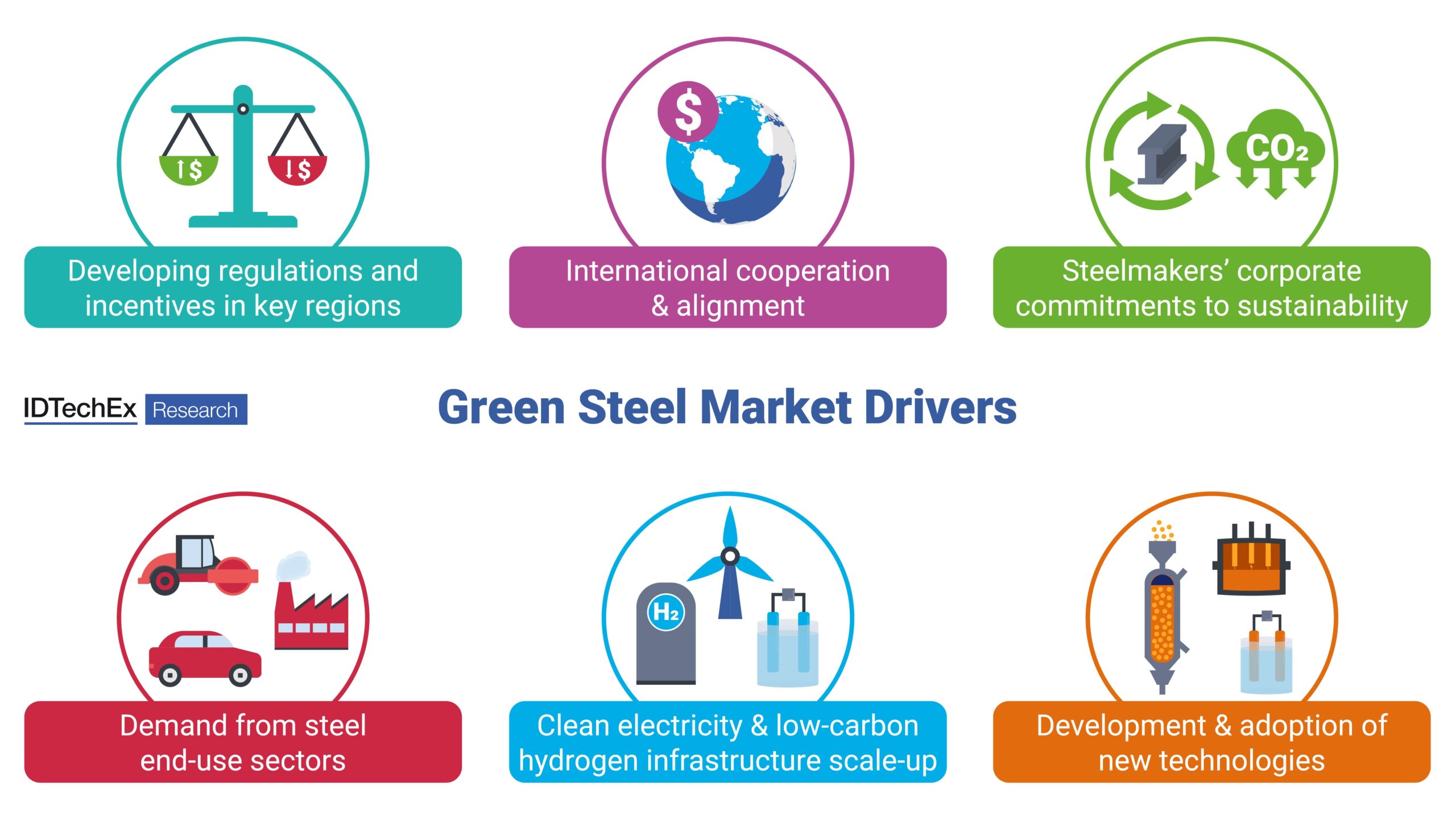Decarbonizing the Steel Industry: The Rise of Green Steel and Hydrogen-Based Production
Key Ideas
- Global steel industry faces the challenge of reducing 7-9% of global CO2 emissions, driving the need for decarbonization.
- Emerging market for green steel propelled by new regulations, government incentives, and technological innovations like hydrogen-based production.
- Various nations like the EU, US, China, and others are investing in steel decarbonization, with hydrogen-based direct reduced iron production gaining traction.
- The steel industry is exploring diverse technologies from biomass as a reducing agent to hydrogen injection and circular steel production to achieve emission reduction goals.
Steel, a cornerstone of modern society, presents a significant challenge in global decarbonization efforts due to its high CO2 emissions. However, new regulations and incentives are pushing major steelmakers towards greener practices. The emergence of a market for green steel, particularly through hydrogen-based production, is on the rise, with forecasts predicting substantial growth by 2035. The EU is leading the charge with comprehensive policies, while countries like the US, China, and others are also investing in decarbonization initiatives.
Technological innovations such as biomass utilization, hydrogen injection, and circular steel production are being explored to reduce emissions from steelmaking processes. The shift towards low-carbon hydrogen as a replacement for coal in ironmaking processes is gaining momentum, albeit constrained by infrastructure limitations. Companies are also looking into novel technologies like hydrogen plasma smelting reduction to revolutionize the industry.
Steel mills are focusing on improving processes like blast furnace operations and exploring carbon capture, utilization, and storage as supplementary decarbonization solutions. Circular steel production is being embraced worldwide, with a shift towards electric arc furnaces, renewable energy sources, and future investments in hydrogen and electricity-based technologies.
Challenges persist, such as the need for high-quality iron ore pellets in DRI plants, leading to the development of innovative technologies that directly use lower-grade iron ore fines. The industry's commitment to reducing emissions is evident through continuous investments in research and development. Overall, the steel industry's journey towards decarbonization is multifaceted, with hydrogen playing a crucial role in shaping its sustainable future.
Topics
Green Hydrogen
Renewable Energy
Green Technology
Decarbonization
Steel Industry
Carbon Capture
EU Policy
Global Investment
Ironmaking Processes
Latest News
